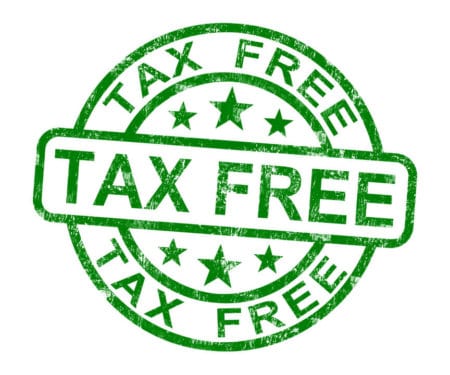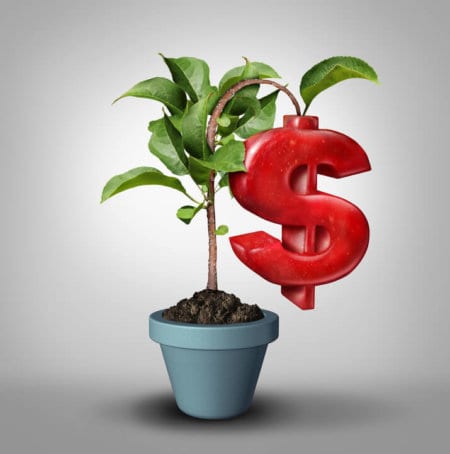Tax-Free Income Funds might be one great tax-free way you could invest in order to keep your taxes low. And, of course, it’s legal. Although this blog has its own title and is not, per se, a Part 2 of our previous blog, you will see a connection. So we recommend you read and review our previous blog before diving into this one.
Investing in Tax-Free Income Funds at Any Level

If you’re considering investing, Gavrilov & Co knows you will love the advice in this new blog about tax-free income funds. And, in the words of our professional magazine, Accounting Today, “What could be better than learning about a way to invest in tax-free income?”
Gavrilov & Co is here to encourage you to grow wealth while you pay your legal minimum of taxes. Our executive accountants and our tax squad can help you grow your business and investments.
We’ll help you implement sophisticated tax-planning to guide you, not just through this coming tax season—but over the coming years. Tax-Free Income Funds are just one of the many ways we can accomplish this.
Investors really can, and do, enjoy “tax-free income funds to grow wealth and minimize taxes.” First Things First: What is a Tax-Free Income Fund?
Breaking Down the Definitions Surrounding Tax-Free Income Funds
Let’s break some eggs to make an omelet, as the old saying goes. We’ll break the term Tax-Free Income Fund into several parts so you can get a clear picture of what it is. Then, if it has the right spice for your budget, like the famous Chef Emeril Lagasse, you can say “Bam!”
- A tax-free fund is an investment with dividends that aren’t taxed. These types of tax-free income funds are usually called municipal bond funds.
- Likewise, we want you to understand that an income fund is a mutual fund, an exchange-traded fund(also called an “ETF.”) In the words of experts at Investopedia, “An exchange-traded fund (ETF) is a collection of securities—such as stocks—that tracks an underlying index. The best-known example is the SPDR S&P 500 ETF (SPY), which tracks the S&P 500 Index.” Find out more about these terms at this reliable online resource.
Getting Ready to Drawing Conclusions from the Definitions: Getting to the Good Part

Thus, we want you to know that ETFs can contain many types of investments, including stocks, commodities, bonds, or a mixture thereof. You should also understand that an exchange-traded fund is marketable security.
In the simplest terms, all this means is that it comes with “an associated price that allows it to be easily bought and sold.” Put simply, an ETF “pays dividends to shareholders. Investors use this type of investment to create an income stream from their investments.”
And the old chef might say, “Bam, because that’s what he said when he added just the right spice to a special dish. There’s no reason you couldn’t say it when you add just the right tax-free touch to your investment portfolio.
Conclusions about Free of Tax Income Funds from the Definitions: the Good Part
Now, let’s do a little tax planning: You see, if a high-income bracket is the bane of your existence, a tax-free income fund with tax-free municipal bonds from your state might be a great investment choice. “Bam,” as the chef would say, but be careful. Please investigate your own tax bracket before putting your dollars into those tax-free income funds. We suggest you read this first: 5 Reasons to Invest in Municipal Bonds When the Fed Hikes Rates.)
Before You Go for the Tax-Free Income Fund, We’ll Figure Your Tax Equivalent Yield
Are you ready? Below you will find a sort of a formula to discover whether or not you can financially benefit from investing in a tax-free income fund. After all, your accountant might advise you that you’d be better off in a taxable income fund. Bam! You need to know why.
Let’s see how to figure your Tax Equivalent Yield: Formula

- We’ll start by figuring your marginal tax rate.
- Then we’ll compare the rate of return on a between a taxable and a tax-free income fund.
- Finally, we will calculate which investment will most probably give you a higher return after taxes.
- You and your Gavrilov & Co tax advisor will then know which path you should take. (Bam.)
Free of Tax Income Funds and Your Bottom Line
In the final analysis, are you shopping for investments for the fixed-income content of your portfolio? If so, you might discover these tax-free income funds are the perfect dish. We have one special caveat, and it’s a critical one. Purchase these municipal bond funds in accounts outside of:
- your 401(k) plan,
- your 403(b) or individual retirement account (IRA)
Only then can you “reap the best benefit of the tax-free yield.” So, has this simplified recipe for Tax-free Income Funds whetted your appetite for more details? Then you’ll really enjoy sharpening your tax acumen and possibly lowering your tax burden.
And you can do both through Gavrilov & Company’s personalized tax-planning and business-advising strategies. (Bam! That’s delicious news!) We invite you to a special conversation because with the new tax laws in one hand and our tax-planning advice on your tax-free income funds in the other, you could unlock almost a tax-free future.

